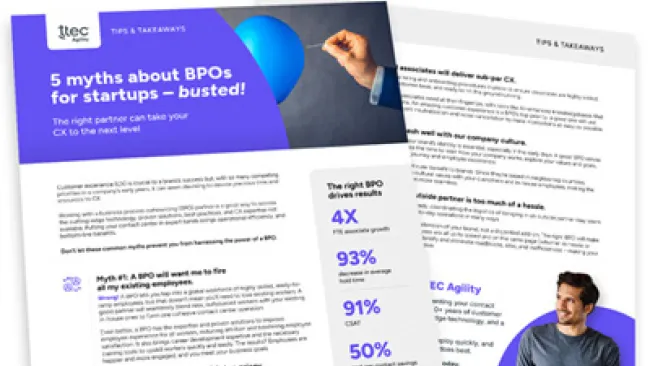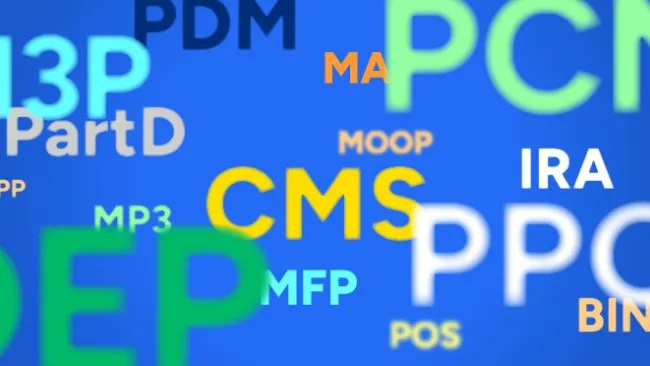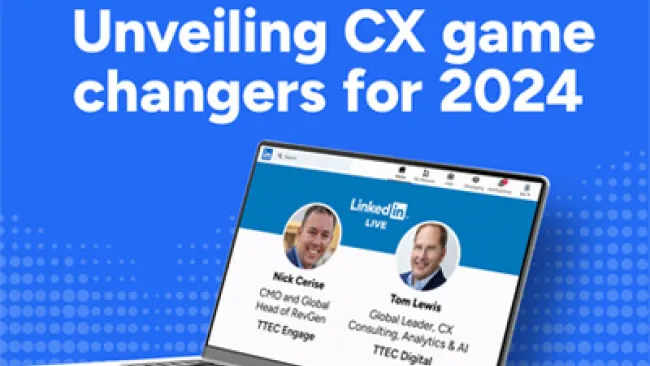Innovation is a key component to any organization’s growth; however, failure is intrinsic. According to Brian Solis, principal analyst at Altimeter Group, the root problem with many companies is that they’re built to keep things from going wrong, not to try to break things apart.
In “Crossing the Experience Divide,” he says resilient companies will intentionally break, not protect, their business models in anticipation of what customers hope to feel. In such cases, “creative disruption becomes a business strategy to either invest in or acquire the very things you feared, rather than simply protect what it is you have,” he says.
To succeed, Solis adds, requires a different type of leadership as well as thinking about customers as groups of connected people. However, such changes aren’t going to happen overnight. But, if you want your company to survive, you have no alternative. Here are three ideas for how to ensure you have a sustained process for creative re-invention and continuous innovation.
1. Crowdsource Creative Ideas
An increasing number of companies use crowdsourcing today, asking customers and interested third parties to come up with creative solutions to their corporate conundrums. From Coca-Cola to BMW, companies are crowdsourcing ideas from marketing briefs to products. When you ask a crowd for solutions, you benefit from a variety of things: access to a wide knowledge pool and a broader source of ideas, a range of generational consumer insights, and fast and cost-effective problem-solving capabilities. But, you have to make it easy to submit an idea. General Mills, for instance, seeks ideas that help the company deliver breakthrough innovation in its operational areas. The “G-Win” open call encourages anyone to visit the website and click the “Submit a Novel Proposal” tab to suggest product or technology innovations useful to General Mills and its businesses.
So whether you want ideas for a new marketing campaign or how to improve an existing product, relying on the wisdom of the crowd has its benefits. Asking customers and employees what they want, rather than relying on a small team of advisors, can help you improve business outcomes and better meet customers’ needs in the long run.
2. Provide an Environment That Fosters Innovation
Innovation requires a nurturing atmosphere where employees can easily develop ideas. Companies like Google use “play time” to increase such creativity and foster teamwork among employees. An environment that includes play time encourages people to think in unusual and creative ways. In fact, studies show that engaging in play opens up new neural connections in the brain, leading to greater creativity. This allows creative ideas to flow more freely.
In his TED talk, Tim Brown, CEO of IDEO, said that creating an office in which people have the security and comfort to play and not be judged allows them to take more creative risks. So erecting a foosball table in the corner of the office reminds employees they work in a permissive and playful environment.
Take the time to create the atmosphere in which effective innovation becomes a part of your ongoing strategic planning. It’s likely that your long-term survival depends on it.
3. Champion Innovative Approaches
If you decide to go the route of crowdsourcing innovative ideas, you may want to consider appointing an idea champion. Champions are passionate advocates who want to advance the value creation process. Oftentimes, companies that crowdsource ideas are ill prepared to handle the influx of requests, and suggestions don’t get implemented and customers get ignored.
This is why the role of an idea champion is so important. He or she takes ownership of the ideas and makes sure that they get the traction or the attention each idea deserves.
Making innovation top priority is essential to long-term survival in business. For creative disruption to take hold it requires a different kind of business leader than what we see today, Solis says. “Future business leaders will develop a strong sense of urgency, and they’ll be able to sell that need for immediate change to other stakeholders,” he says.
Ultimately innovation must come from the top. This includes making it culturally acceptable for individuals to test new ideas until they find a clear path on which to prosper in business.
Also, check out the most recent issue of our e-newsletter.
On the Path to Creative Disruption















